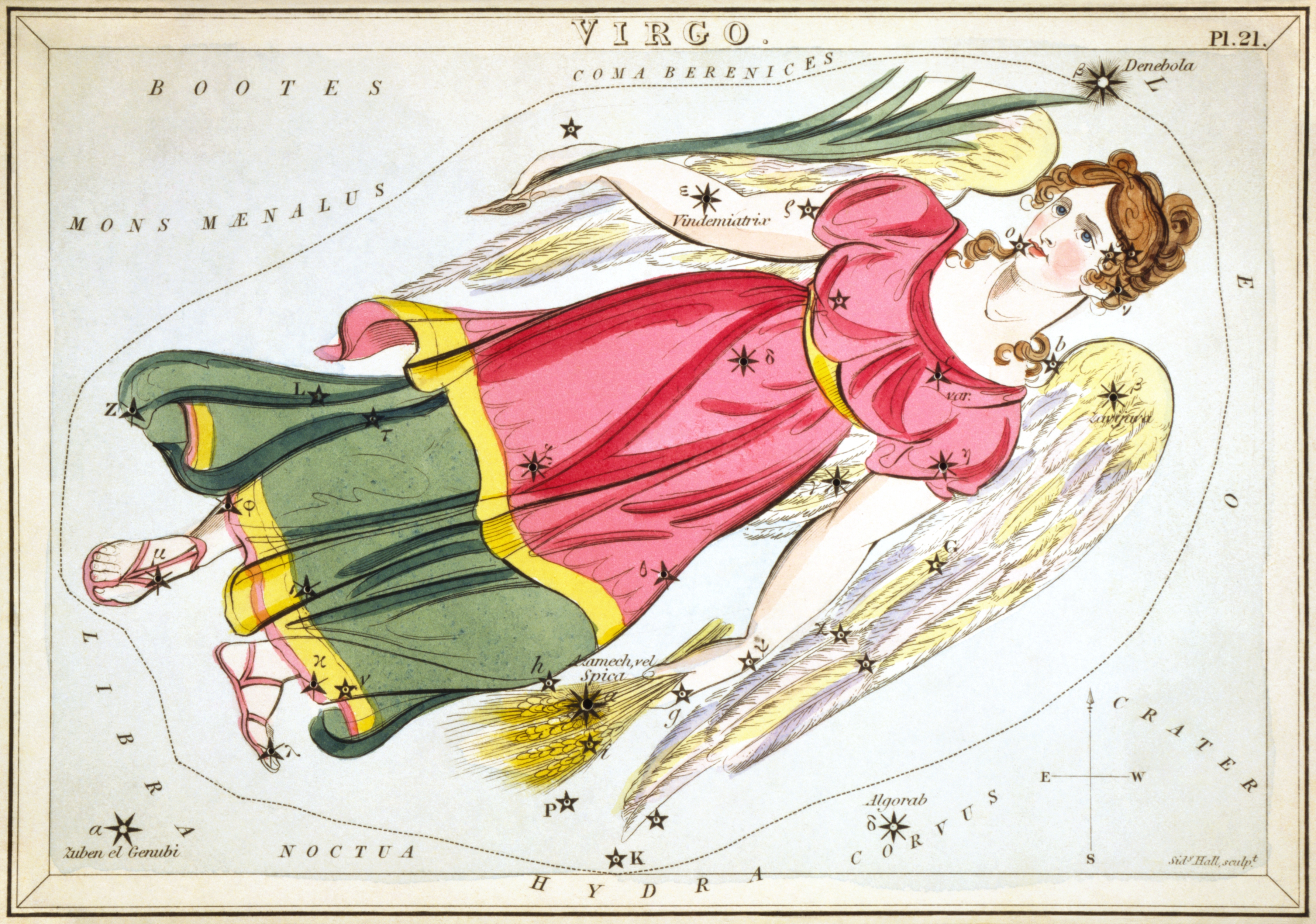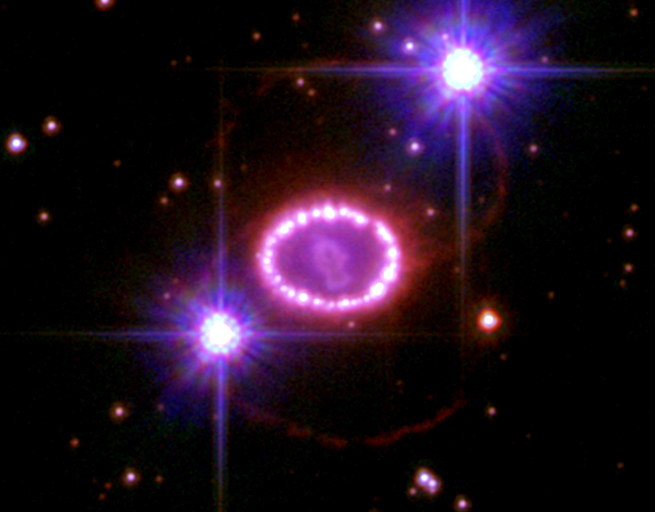|
NGC 4995
NGC 4995 is a "moderately bright and large galaxy" in the constellation Virgo. It is a member of the NGC 4995 Group of galaxies, which is a member of the Virgo II Groups, a series of galaxies and galaxy clusters strung out from the southern edge of the Virgo Supercluster The Virgo Supercluster (Virgo SC) or the Local Supercluster (LSC or LS) is a mass concentration of galaxies containing the Virgo Cluster and Local Group, which itself contains the Milky Way and Andromeda galaxies, as well as others. At leas .... Supernova SN 2023gfo was discovered on 20 April 2023 ( Type II, mag 16.2). Gallery File:SN2023gfo-NGC4995-20230421-1017.png, Supernova 2023gfo in NGC 4995 as seen on 2023-04-21 10:17 UT. File:SN 2023gfo in NGC 4995.jpg, Supernova 2023gfo in NGC 4995 imaged UTC 2023-04-24T03:06 References Virgo (constellation) 4995 {{spiral-galaxy-stub ... [...More Info...] [...Related Items...] OR: [Wikipedia] [Google] [Baidu] |
New General Catalogue
The ''New General Catalogue of Nebulae and Clusters of Stars'' (abbreviated NGC) is an astronomical catalog, astronomical catalogue of deep-sky objects compiled by John Louis Emil Dreyer in 1888. The NGC contains 7,840 objects, including galaxy, galaxies, star clusters and emission nebulae. Dreyer published two supplements to the NGC in 1895 and 1908, known as the ''Index Catalogues'' (abbreviated IC), describing a further 5,386 astronomical objects. Thousands of these objects are best known by their NGC or IC numbers, which remain in widespread use. The NGC expanded and consolidated the cataloguing work of William Herschel, William and Caroline Herschel, and John Herschel's ''General Catalogue of Nebulae and Clusters of Stars''. Objects south of the Celestial sphere, celestial equator are catalogued somewhat less thoroughly, but many were included based on observation by John Herschel or James Dunlop. The NGC contained multiple errors, but attempts to eliminate them were made by ... [...More Info...] [...Related Items...] OR: [Wikipedia] [Google] [Baidu] |
Dark Energy Spectroscopic Instrument
The Dark Energy Spectroscopic Instrument (DESI) is a scientific research instrument for conducting spectrographic astronomical surveys of distant galaxies. Its main components are a focal plane containing 5,000 fiber-positioning robots, and a bank of spectrographs which are fed by the fibers. The new instrument will enable an experiment to probe the expansion history of the universe and the mysterious physics of dark energy. The instrument is operated by the Lawrence Berkeley National Laboratory under funding from the US Department of Energy's Office of Science. Construction of the new instrument, now completed, was principally funded by the US Department of Energy's Office of Science, and by other numerous sources including the US National Science Foundation, the UK Science and Technology Facilities Council, France's Alternative Energies and Atomic Energy Commission, Mexico's National Council of Science and Technology, Spain's Ministry of Science and Innovation, by the Gordon ... [...More Info...] [...Related Items...] OR: [Wikipedia] [Google] [Baidu] |
KY Virginis
KY or Ky may refer to: Arts and entertainment * Ky Kiske, a fictional character in the ''Guilty Gear'' video game series * Kashiyatra, a festival in India People * Nguyễn Cao Kỳ (1930-2011), South Vietnamese general and prime minister * Ky Baldwin (born 2001), Australian singer, songwriter, dancer, and actor * Ky Bowman (born 1997), American professional basketball player * Ky Bush (born 1999), American MLB player * Ky Dickens, American filmmaker, writer, and director * Ky Ebright (1894-1979), American rowing coach * Ky Fan (1914-2010), Chinese-born American mathematician * Ky Furneaux (born 1973), Australian television personality and host, outdoor guide, survival expert, and stunt person * Ky Hollenbeck (born 1987), American kickboxer * Ky Hurst (born 1981), Australian swimmer and ironman * Ky Laffoon (1908-1984), American professional golfer * Ky Nam Le Duc, Vietnamese-Canadian film director and screenwriter * Ky Rodwell (born 1999), Australian professional rugby league ... [...More Info...] [...Related Items...] OR: [Wikipedia] [Google] [Baidu] |
Virgo (constellation)
Virgo is one of the constellations of the zodiac. Its name is Latin for maiden, and its old astronomical symbol is (♍︎). Lying between Leo to the west and Libra to the east, it is the second-largest constellation in the sky (after Hydra) and the largest constellation in the zodiac. The ecliptic intersects the celestial equator within this constellation and Pisces. Underlying these technical two definitions, the sun passes directly overhead of the equator, within this constellation, at the September equinox. Virgo can be easily found through its brightest star, Spica. Location Virgo is prominent in the spring sky in the Northern Hemisphere, visible all night in March and April. As the largest zodiac constellation, the Sun takes 44 days to pass through it, longer than any other. From 1990 and until 2062, this will take place from September 16 to October 30. It is located in the third quadrant of the Southern Hemisphere (SQ3) and can be seen at latitudes between +80° and ... [...More Info...] [...Related Items...] OR: [Wikipedia] [Google] [Baidu] |
Constellation
A constellation is an area on the celestial sphere in which a group of visible stars forms a perceived pattern or outline, typically representing an animal, mythological subject, or inanimate object. The origins of the earliest constellations likely go back to prehistory. People used them to relate stories of their beliefs, experiences, creation, or mythology. Different cultures and countries adopted their own constellations, some of which lasted into the early 20th century before today's constellations were internationally recognized. The recognition of constellations has changed significantly over time. Many changed in size or shape. Some became popular, only to drop into obscurity. Some were limited to a single culture or nation. The 48 traditional Western constellations are Greek. They are given in Aratus' work ''Phenomena'' and Ptolemy's ''Almagest'', though their origin probably predates these works by several centuries. Constellations in the far southern sky were ... [...More Info...] [...Related Items...] OR: [Wikipedia] [Google] [Baidu] |
NGC 4995 Group
NGC commonly refers to: * New General Catalogue of Nebulae and Clusters of Stars, a catalogue of deep sky objects in astronomy NGC may also refer to: Companies * NGC Corporation, name of US electric company Dynegy, Inc. from 1995 to 1998 * National Gas Company of Trinidad and Tobago, state-owned natural gas company in Trinidad and Tobago * National Grid plc, a former name of National Grid Electricity Transmission plc, the operator of the British electricity transmission system * Northrop Grumman Corporation, aerospace and defense conglomerate formed from the merger of Northrop Corporation and Grumman Corporation in 1994 * Numismatic Guaranty Corporation, coin certification company in the United States Other uses * National Gallery of Canada, art gallery founded in 1880 in Ottawa, Canada * National Geographic (American TV channel), National Geographic, documentary and reality television channel established in the United States in 2001 formerly called National Geographic Chann ... [...More Info...] [...Related Items...] OR: [Wikipedia] [Google] [Baidu] |
Virgo II Groups
The Virgo II Groups, also known as the Virgo II Cloud, Virgo Southern Extension, or the Virgo S Cloud, are a series of at least 100 galactic clusters and individual galaxies stretching approximately off the southern edge of the Virgo Supercluster. It is located approximately to from the Solar System, at a right ascension of to . These clusters include: * M61 Group: ** IC 3474 ** M61 (NGC 4303) ** NGC 4255 ** NGC 4420 ** NGC 4496A ** NGC 4517A ** NGC 4527 ** NGC 4533 ** NGC 4536 ** NGC 4581 ** NGC 4599 ** NGC 4632 ** PGC 40951 ** UGC 7387 ** UGC 7522 **UGC 7612 ** UGC 7780 * NGC 4030 Group: **NGC 4030 ** UGC 6970 ** UGC 7000 * NGC 4179 Group: ** NGC 4116 ** NGC 4123 ** NGC 4179 ** UGC 7035 * NGC 4697 Group: ** IC 3908 ** MCG-1-33-1 ** MCG-1-33-3 ** MCG-1-33-11 ** MCG-1-33-33 ** MCG-1-33-59 ** MCG-1-33-61 ** MCG-1-33-82 **NGC 4697 **NGC 4731 ** NGC 4775 ** NGC 4941 ** NGC 4948 ** NGC 4948A ** NGC 4951 ** NGC 4958 ** UGCA 310 * NGC 4699 Group: ** MCG-2-33-15 ** MCG-2-33-47 ** MCG- ... [...More Info...] [...Related Items...] OR: [Wikipedia] [Google] [Baidu] |
Galaxy Cluster
A galaxy cluster, or a cluster of galaxies, is a structure that consists of anywhere from hundreds to thousands of galaxies that are bound together by gravity, with typical masses ranging from 1014 to 1015 solar masses. They are the second-largest known gravitationally bound structures in the universe after galaxy filaments and were believed to be the largest known structures in the universe until the 1980s, when superclusters were discovered. One of the key features of clusters is the intracluster medium (ICM). The ICM consists of heated gas between the galaxies and has a peak temperature between 2–15 keV that is dependent on the total mass of the cluster. Galaxy clusters should not be confused with ''galactic clusters'' (also known as open clusters), which are star clusters ''within'' galaxies, or with globular clusters, which typically orbit galaxies. Small aggregates of galaxies are referred to as galaxy groups rather than clusters of galaxies. The galaxy groups a ... [...More Info...] [...Related Items...] OR: [Wikipedia] [Google] [Baidu] |
Virgo Supercluster
The Virgo Supercluster (Virgo SC) or the Local Supercluster (LSC or LS) is a mass concentration of galaxies containing the Virgo Cluster and Local Group, which itself contains the Milky Way and Andromeda galaxies, as well as others. At least 100 galaxy groups and clusters are located within its diameter of 33 megaparsecs (110 million light-years). The Virgo SC is one of about 10 million superclusters in the observable universe and is in the Pisces–Cetus Supercluster Complex, a galaxy filament. A 2014 study indicates that the Virgo Supercluster is only a lobe of an even greater supercluster, Laniakea, a larger, competing referent of the term Local Supercluster centered on the Great Attractor. Background Beginning with the first large sample of nebulae published by William and John Herschel in 1863, it was known that there is a marked excess of nebular fields in the constellation Virgo (near the north galactic pole). In the 1950s, French–American astronomer Gér ... [...More Info...] [...Related Items...] OR: [Wikipedia] [Google] [Baidu] |
Supernova
A supernova is a powerful and luminous explosion of a star. It has the plural form supernovae or supernovas, and is abbreviated SN or SNe. This transient astronomical event occurs during the last evolutionary stages of a massive star or when a white dwarf is triggered into runaway nuclear fusion. The original object, called the ''progenitor'', either collapses to a neutron star or black hole, or is completely destroyed. The peak optical luminosity of a supernova can be comparable to that of an entire galaxy before fading over several weeks or months. Supernovae are more energetic than novae. In Latin, ''nova'' means "new", referring astronomically to what appears to be a temporary new bright star. Adding the prefix "super-" distinguishes supernovae from ordinary novae, which are far less luminous. The word ''supernova'' was coined by Walter Baade and Fritz Zwicky in 1929. The last supernova to be directly observed in the Milky Way was Kepler's Supernova in 1604, appea ... [...More Info...] [...Related Items...] OR: [Wikipedia] [Google] [Baidu] |
Type II Supernova
A Type II supernova (plural: ''supernovae'' or ''supernovas'') results from the rapid collapse and violent explosion of a massive star. A star must have at least 8 times, but no more than 40 to 50 times, the mass of the Sun () to undergo this type of explosion. Type II supernovae are distinguished from other types of supernovae by the presence of hydrogen in their spectra. They are usually observed in the spiral arms of galaxies and in H II regions, but not in elliptical galaxies; those are generally composed of older, low-mass stars, with few of the young, very massive stars necessary to cause a supernova. Stars generate energy by the nuclear fusion of elements. Unlike the Sun, massive stars possess the mass needed to fuse elements that have an atomic mass greater than hydrogen and helium, albeit at increasingly higher temperatures and pressures, causing correspondingly shorter stellar life spans. The degeneracy pressure of electrons and the energy generated by the ... [...More Info...] [...Related Items...] OR: [Wikipedia] [Google] [Baidu] |
Texas Tech University
Texas Tech University (Texas Tech, Tech, or TTU) is a public research university in Lubbock, Texas. Established on , and called Texas Technological College until 1969, it is the main institution of the five-institution Texas Tech University System. The university's student enrollment is the sixth-largest in Texas as of the Fall 2020 semester. As of fall 2020, there were 40,322 students (33,269 undergraduate and 7,053 graduate) enrolled at Texas Tech. With over 25% of its undergraduate student population identifying as Hispanic, Texas Tech University is a designated Hispanic-serving institution (HSI). The university offers degrees in more than 150 courses of study through 13 colleges and hosts 60 research centers and institutes. Texas Tech University has awarded over 200,000 degrees since 1927, including over 40,000 graduate and professional degrees. Texas Tech is classified among "R1: Doctoral Universities – Very high research activity." Research projects in the areas ... [...More Info...] [...Related Items...] OR: [Wikipedia] [Google] [Baidu] |







